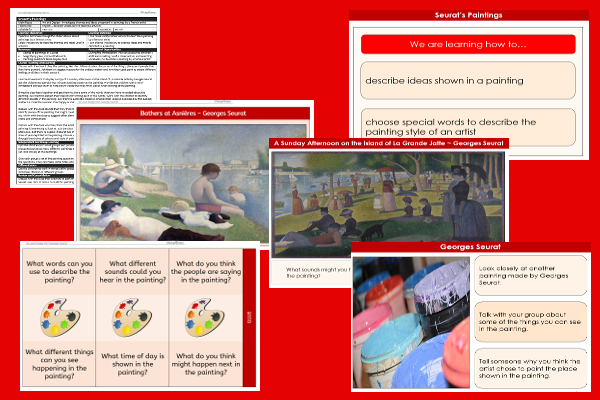Lesson One – Seurat’s Paintings

This art and design teaching pack for Key Stage Two gets the children to investigate and present some of the different themes and ideas that have been presented in paintings by a significant French artist.
The class can explore some examples of a range of paintings by Georges Seurat as preparation for replicating the artist’s style and techniques in their own artwork.
Download this teaching pack including a lesson plan, classroom activities and an interactive presentation to investigate and present some of the different themes and ideas that have been presented in paintings by a significant French artist
Activities in this teaching pack include display posters to explore and describe the colours and techniques used in paintings by a significant French artist and a table display card to identify and explore themes and ideas presented in artwork by a significant French artist.
The interactive presentation gets the children to investigate and present some of the different themes and ideas presented in paintings by a significant French artist.
This lesson is part of an art and design scheme of work to get the children to identify, describe and replicate the painting style of a significant French artist by using pointillism to create scenes of different landscape views. There are teaching activities for shared learning, differentiated worksheets to support independent learning and interactive presentations to introduce concepts and key skills.
-

Maths Arithmetic Assessment
Assess abilities in solving arithmetic number problems for addition, subtraction, multiplication and division when working with informal and formal written calculations
-

Environment
Identify and describe some of the special landscapes and locations that can be found in the world and reflect on how they can be protected and preserved for the future
-

Silent Letter Words
Explore and illustrate the meanings and spellings of some different words with silent letters when using them in a range of topics and scenarios
-

Complaint Letters
Explain and model how to format and structure writing when composing letters of complaint about different issues and scenarios
